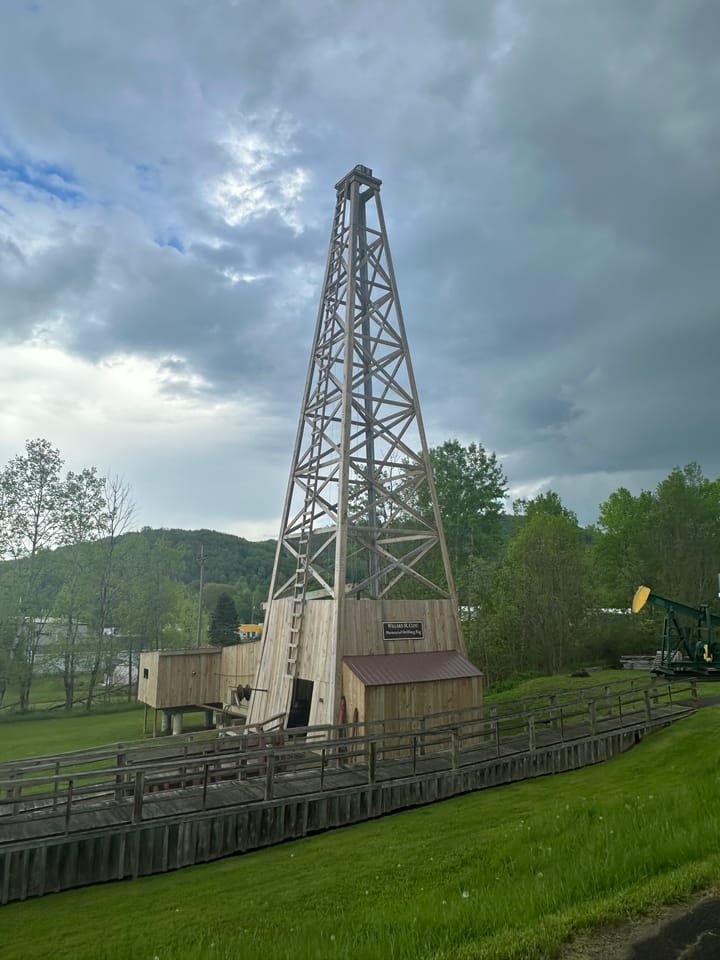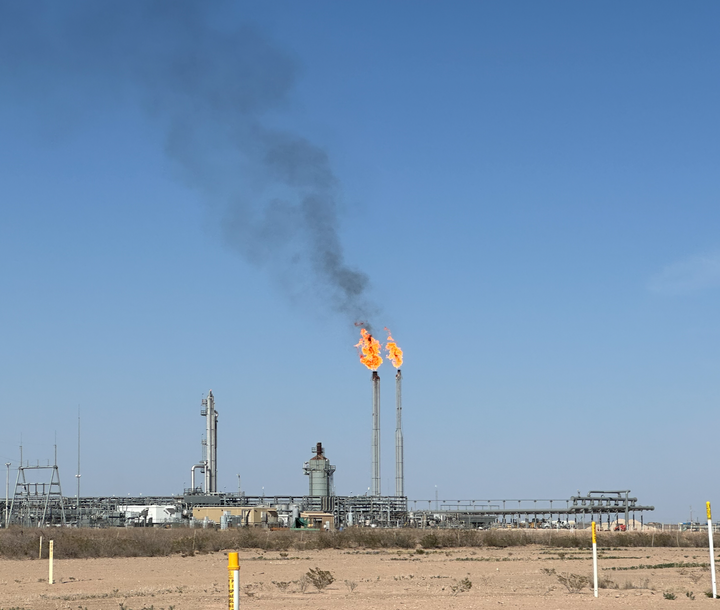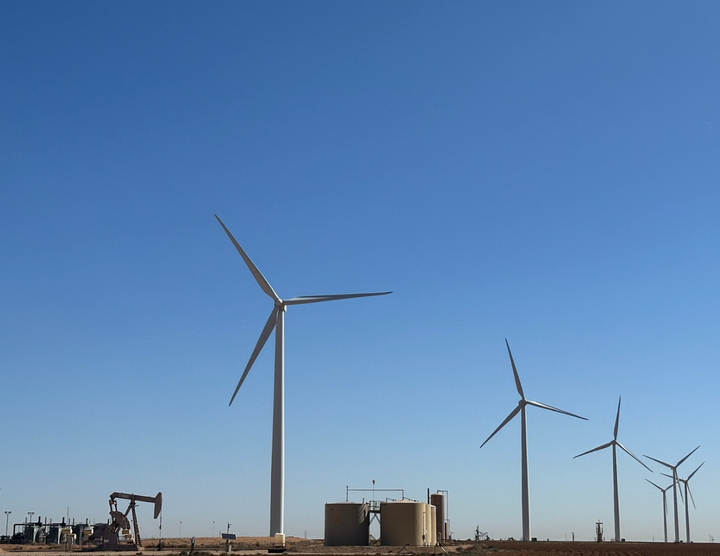Fossil Fuel Companies’ Tough Sell: Oil and Gas Sites With Costly Environmental Clean-up

Last year was rough for major oil companies. BP, Chevron, ExxonMobil, Shell, and Total suffered a combined $77 billion in losses for 2020. And now, as Reuters reports, many are trying to sell-off “dozens of oil and gas fields and refineries worth more than $110 billion to curb both their ballooning debt and their carbon footprints.”
Typically, when major oil companies decide to sell off assets, they like to make a “clean-break”. Meaning the new buyers are the ones to not only take on the management of these assets but also all associated decommissioning costs and environmental liabilities when the assets reach the end of their economic life.
It now appears, however, that the days of making a clean break from these environmental liabilities and decommissioning costs are a thing of the past — at least for offshore oil wells.
Worldwide, the total cost of decommission offshore oil wells is expected to be over $100 billion by 2030, Bloomberg reported last June based on estimates from Wood Mackenzie.
Which means that these days, if companies want to make a clean break, it will likely cost them dearly.
It’s a challenge Exxon experienced earlier this year when the company sold its North Sea exploration and production assets for over $1 billion — half of what it was hoping to get. In large part experts believe this was due to the high decommissioning costs that came with inheriting the project.
“We continue to high-grade our portfolio by divesting assets that are less strategic and focusing our investments on our advantaged projects that are among the best in the industry,” Neil Chapman, Exxon’s senior vice president, said a statement in February, explaining the company’s announced sale of some North Sea oil assets.
Decommissioning costs for the project were estimated at around $1.1 billion by industry analysts at Westwood Global. And while it remains unclear which company will assume liability for the decommissioning costs of these assets, Energy Voice reported in March that Boston Consulting Group assumed the liabilities were transferred as part of the deal.
A Tough Sell
Exxon’s sale of its North Sea assets for half of what it originally was asking might reflect the new reality of oil and gas asset sales where decommissioning costs either discount sale prices significantly or simply kill the deal.
In November 2020, Exxon announced it had abandoned plans to sell its stake in Australian assets known as the Bass Strait operation. During the sale process, Australian regulators told Exxon it would potentially be liable for the decommissioning costs even if it sold the project. So Exxon decided not to sell.
Boiling Cold, an Australian independent news organization, reported on Exxon’s decision in February: “ExxonMobil abandoned the sale of its Bass Strait operation just two weeks after the Australian Government told the U.S. major it would be liable for decommissioning the 50-year-old operation if a new owner failed to.”
Saul Kavonic, a Credit Suisse oil and gas analyst, summed up the problem for The Sydney Morning Herald explaining that “The long and the short of it is that it was always going to be a pretty challenging asset to sell, particularly because of the large abandonment liability associated with it.”
Aging assets like this property, which has been in operation for over 50 years, have little to no value if the environmental and decommissioning liabilities are fully valued and factored into the asset’s price and regulators hold the asset owner accountable.
It’s an issue oil major BP has recently faced as well. In 2020, BP sold a large portion of its assets in Alaska to Texas-based private company Hilcorp. However, this was no clean break. Banks including JPMorgan did not want to lend Hilcorp $5.6 billion for the purchase price because according to the the Wall Street Journal “the collapse in oil prices related to the coronavirus pandemic and cratering energy demand has made the banks uncomfortable providing the loan.”
So, BP agreed to lend them the money — an unusual move.
Reuters reported that the deal was structured so Hilcorp would pay BP $4 billion over time with the remaining $1.6 billion being “based on future earnings from the properties.”
In addition, regulators required BP to retain secondary liability for the assets. This means BP not only loaned Hilcorp the money to buy the assets, but it also retained liability for decommissioning costs — estimated to be “in the billions” according to the Anchorage Daily News.
With the structure of this deal and the potential decommissioning liabilities being so high, the real value of this deal for BP is well below the headline number of $5.6 billion. To help understand why BP would agree to what looks like a bad deal, it’s important to understand the company’s motivation. As the Wall Street Journal reported in April 2020, BP’s goal for the deal was to reduce its high level of debt — which the deal does, at least on paper and in the short-term.
Much like with Exxon’s North Sea sale, the decommissioning liabilities had a large negative impact on the value of the assets in this deal, with the seller making huge financial concessions to make the deal happen.
Industry’s Clean Getaway On Land
While decommissioning liabilities are greatly impacting offshore oil and gas assets around the world, the same isn’t happening for onshore assets in the U.S., where the industry has a history of either simply abandoning projects that are no longer economically viable or using the bankruptcy process to abandon those assets.
The American public is currently facing a potential bill of $280 billion for the cleanup of 2.6 million unplugged oil and gas wells, according to Billion Dollar Orphans, a 2020 report from London-based think tank Carbon Tracker.
Megan Milliken Biven, a former policy analyst with the U.S. Bureau of Ocean Energy Management, explained to DeSmog why the situation is so different with onshore versus offshore assets.
“It’s always amazing for me to discover how much better the regulations are offshore than onshore,” Milliken Biven said. The critical difference between the two according to Biven is joint and several liability requirements for offshore assets — which means that simply selling an offshore asset does not get a company “off the hook” for future decommissioning costs.
This means that offshore companies operating in areas that require joint and several liability can’t simply unload their decommissioning liabilities with a sale — as Exxon recently learned in Australia.
Meanwhile, selling-off old assets to smaller companies to dump the liabilities associated with those properties is an established part of the onshore oil and gas business model. Biven refers to these smaller companies as scavenger companies. Although some, like Hilcorp, are very large companies.
“On shore these scavenger firms, the game was to … leave what was there for the government to pick up the tab,” Biven said, “You don’t get to however millions of [abandoned] wells we have without that being an intentional strategy.”
Examples of this approach with U.S. onshore oil and gas companies are everywhere. In February 2020, Clark Williams-Derry, energy finance analyst for the Institute for Energy Economics and Financial Analysis, highlighted one egregious example with a report focused on California Resources Corporation (CRC) — a company that was created in 2014 by purchasing many of Occidental Petroleum’s declining assets in California.
“On the surface CRC looks like your average struggling oil venture. But it raises the question of whether the company was created specifically to offload Occidental’s California cleanup liabilities,” Williams-Derry said in a statement.
CRC declared bankruptcy a few months later in July 2020 because it couldn’t make payments on its $5 billion in debt (originally taken on in order to purchase the assets from Occidental). As the Palm Springs Desert Sun reported, while bankruptcy allowed CRC to get much of this debt off its books, it still had close to 8,000 idle wells in the state with an expected cleanup bill of over $1 billion for those wells. The company has set aside a small fraction of that amount for eventual cleanup due to lax state regulations. As a result, Occidental appears to have effectively made a clean break from its former environmental liabilities by selling its California assets to CRC.
In March, the Biden administration proposed allocating $16 billion of its infrastructure bill to begin to address the onshore abandoned well issue. While this proposal has been well received by some due to the potential to employ many workers while addressing this environmental disaster, it also has been criticized as a bailout of the industry that continues to reward bad behavior.
“We’re rewarding the worst-performing operators,” Virginia Palacios, executive director of Commission Shift, an organization focused on improving oil industry oversight in Texas, told Quartz. “Without substantive reform attached to [the Biden plan’s] funding, you’re sending the message that it’s ok to socialize the cost of bad business.”
With growing acknowledgement that the oil and gas industry is in decline, if companies are not held accountable for environmental liabilities and decommissioning costs, this already large cost to the public could become much bigger — especially for onshore assets.
“Abandonment costs will haunt the industry in the years to come, especially if governments get tougher with parent company guarantees,” said Marcelo de Assis, head of Latin American upstream research for industry consulting firm Wood Mackenzie. A parent company guarantee is what Australia wanted from Exxon for its deal in the Bass Straight — to continue assuming responsibility for an asset it had sold — and is what reportedly killed the deal.
Examples like this, however, are still rare overall. “It [the Bass strait deal] seemed to be an anomaly for a government to actually take decommissioning liabilities seriously and prevent the company from being able to just cut and run,” Williams-Derry told DeSmog. “Standing up for the taxpayer is what is unusual. When governments take a hard line on cleanup, you have real results. You have companies admitting that they can’t make deals to sell off their old assets if they have to pay for cleanup costs.”
Abandonment costs and the associated environmental and climate costs for not properly addressing this issue will certainly haunt the industry but likely haunt the public even longer — since the public is picking up the industry cleanup tab far too often.
Australia held firm with Exxon on its attempt to unload assets and decommissioning costs. If more countries and local regulators do not take the same approach, much of the oil and gas industry will make a clean getaway with their profits, while leaving the costs behind for the public.
“A key solution here is for the government to get tougher,” Williams-Derry said. “Hold the line and make sure the polluters are still on the hook for cleaning up their messes.”
The article originally appeared on DeSmog.



Comments ()